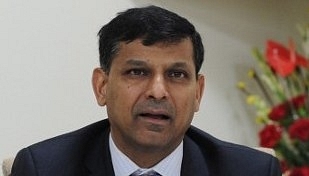
Rate Cut Isn’t Panacea
Companies are reeling under the pressure of repayment for money they borrowed following the slowdown in 2008. And the result of previous rate cuts is yet to manifest.
India Inc as well as the government have been anxiously looking forward to this month’s Monetary Policy Review — to be held by the RBI on 2 June. This year till date, RBI Governor Raghuram Rajan has reduced the policy rate (also called the ‘repo’ rate) twice in the last five months. It currently stands at 7.5 per cent.
Since policy rate is the rate that ultimately determines the overall cost of credit in the economy, the government has been clamouring for a further reduction so that the corporate houses can avail cheaper credit. This, it is alleged, would encourage companies to borrow more to invest in capital projects. The result would be higher wages, greater consumption and, therefore, soaring economic growth.
The government’s chief economic adviser Arvind Subramanian shared this view last week, when he stressed that “there is scope for monetary easing”. Recommending that India needed to follow China’s model of monetary policy, the CEA said that the neighbour was “now cutting the interest rate quite aggressively in response to its growth slowing down and that is going to make its currency more competitive. We need to respond accordingly.”
When bureaucrats speak about making the exchange rate more competitive, it usually means allowing the currency to depreciate so as to boost the country’s exports. This would be perfectly fine if the currency were to find its own level through demand-supply equilibrium. The problem arises when central banks try to depreciate the currency through active interest-rate management. Lower interest rates disenchant foreign investors, who withdraw funds to invest in countries that provide relatively higher returns. This weakens our currency and helps boost exports, which is crucial for ensuring the success of ‘Make in India’ initiative.
Minister of State for Finance Jayant Sinha too supported the growing clamour for a rate cut, saying, “We have achieved macroeconomic stability, inflation has come down. This now creates room for the Reserve Bank of India to cut rates.” That argument seems strong. India’s fiscal deficit is narrowing – it was recorded at 4 per cent in fiscal year 2014-15, down by 0.1 per cent of the annual target set by the government. Current account deficit is expected to fall below 1 per cent this year. Retail inflation too is significantly below the 6 per cent target set by the central bank.
These positive macroeconomic indicators have provided the government with useful pressure points, which it is now using to badger the RBI governor to cut rates tomorrow. But there are equally strong, perhaps even stronger, arguments that should caution us against the dominant narrative of relentless monetary easing.
For one, even though we have seen two rate cuts in the past five months alone, there have hardly been any effects of earnings growth on ground level. In the January to March quarter, for example, most companies reported bleak bottom-line results; April to June quarter is not expected to be any better. At one level, this should not be surprising. The effects of a reduction in policy rates take, on average, about three to four quarters to reflect in the economy. First rate cut was announced only two quarters ago. So, it only makes sense that we wait until at least September for the results to manifest in the economy.
Secondly, even though the economy is growing at comfortable levels, it is still performing below expectations. This is not because the borrowing costs are high, but because most companies — mainly in industries such as infrastructure, textiles, iron and steel, petroleum, and chemicals — are still struggling with high debt that they acquired in the years following the world economic crisis of 2008.
In the three years after the Lehman crisis, for example, Indian businesses’ debt grew by a stupendous 27 per cent a year for three years. From fiscal year 2010 to 2014, companies increased their debt by twice as much – from Rs. 20 lakh crore to over Rs. 41 lakh crore. Most of these borrowings were either for business expansion purposes or for acquisitions. Given that the world economy, including that of India, was in doldrums following the crisis, it is strange that the companies went on a borrowing spree. The banks, mostly state-owned ones, too were lenient in lending funds to infrastructure projects that eventually failed to create productive assets. But that is a different issue.
In his speech titled ‘Going Bust for Growth’, given on 19 May to the Economic Club of New York, Rajan questioned the efficacy of monetary easing for heavily-indebted economies. He pointed out that even though lower interest rates may help companies borrow and invest in capital projects, the returns on those projects would be abysmally low because most profits would be eaten away by prohibitive interest costs. In this case, low interest rates would simply result in poor investments. Given this factor, is rate cut a prudent measure to boost growth?
The fact that Indian companies must pare down their debt levels, which continue to put downward pressure on profits through exorbitant interest costs, is undisputable. Without this measure, a rate cut would merely create inflation and misallocate capital — all this without positively affecting growth. Rajan, however, is in a difficult situation. Should he choose heed the government’s call to listen to benign macroeconomic indicators and ease rates? Or should he choose to wait till the past rate cuts show effect and companies clean up their balance sheets by reducing debts? I hope he chooses the latter.